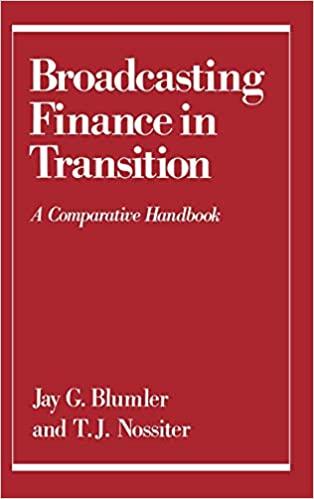Question
Blue Mountain Mining Ltd is evaluating its proposed iron ore mine for the Pilbara region of West Australia. The mines primary operations are the extraction
Blue Mountain Mining Ltd is evaluating its proposed iron ore mine for the Pilbara region of West Australia. The mines primary operations are the extraction of iron ore and its transportation to the port. Given that the mine is 240 kilometres to the nearest port, ore will be transported using three (3) heavy haul trains where each train comprises two (2) locomotives and 208 ore carriages. It is anticipated that it will take one day for each train to complete the return trip from the mine to the port, including loading and unloading
The management of Blue Mountain Mining Ltd have requested that you provide a detailed financial analysis of each train option and prepare a report that recommends a preferred option. Using the information below create a Discounted Cash Flow Analysis and calculate the NPV over 30 years:
The following information has been provided:
| General Information | ||
| Iron ore reserve (tonnes) | 900,000,000 | |
| Annual production (tonnes) | 30,000,000 | |
| Life of mine (years) | 30 | |
| Distance from mine to port (kilometres) | 240 | Round trip is 480 kilometres |
| Trains in operation | 3 | Each train comprises locomotives and carriages |
| Locomotives per train | 2 | |
| Carriages per train | 208 | |
| Fuel usage per train (litres per kilometre) | 8 | Averaged over round trip |
| Fuel cost ($ per litre) | 1.4 | |
| Effective operating days per year | 360 | Used to adjust for maintenance and breakdowns |
| Tax rate | 30% | |
| Discount rate After Tax | 10% | |
| Information on Locomotives (per locomotive) | ||
| Initial outlay ($) | 2,500,000 | |
| Life of locomotive (years) | 15 | |
| Working capital ($) | 500,000 | Fuel, spare parts and related materials |
| Maintenance costs per year ($) | 200,000 | |
| Depreciation method | Straight Line | Rate = 1/Locomotive Life |
| Salvage value at end of year 15 ($) | 0 | |
| Information on Drivers | ||
| Drivers required (per train, per day) | 4 | Two drivers operate each train. |
| Work hours (per driver, per day) | 12 | |
| Driver's weekly working hours (average) | 42 | |
| Driver' yearly working weeks | 48 | |
| Driver's unavailability due to illness (weeks per year) | 2 | |
| Total drivers required | 27 | |
| Driver's average annual salary ($) | 220,000 | |
| Information on Automation | ||
| Additional capital outlay to rail line ($) | 35,000,000 | Sensors and related materials, depreciated straight line over life of mine |
| Salvage of additional capital outlay to rail line ($) | 0 | |
| Additional capital outlay to locomotive ($, per locomotive) | 250,000 | Sensors and related materials required for all new locomotives, depreciated straight line over life of locomotive |
| Salvage of additional capital outlay to locomotives ($, per locomotive) | 0 | |
| Additional working capital ($) | 1,000,000 | Total across rail line and all trains |
| Fuel efficiency usage adjustment | 93% | Automation reduces fuel usage as locomotives operate more efficiently, e.g. reduces cost by 7% |
| Maintenance cost adjustment | 95% | Automation reduces maintenance costs through less wear and tear, and breakdowns of locomotives, e.g. reduces cost by 5% |
| Drivers required | 0 | |
| Total automation technicians required | 6 | |
| Automation technician's average annual salary ($) | 150,000 | |
Step by Step Solution
There are 3 Steps involved in it
Step: 1

Get Instant Access to Expert-Tailored Solutions
See step-by-step solutions with expert insights and AI powered tools for academic success
Step: 2

Step: 3

Ace Your Homework with AI
Get the answers you need in no time with our AI-driven, step-by-step assistance
Get Started


